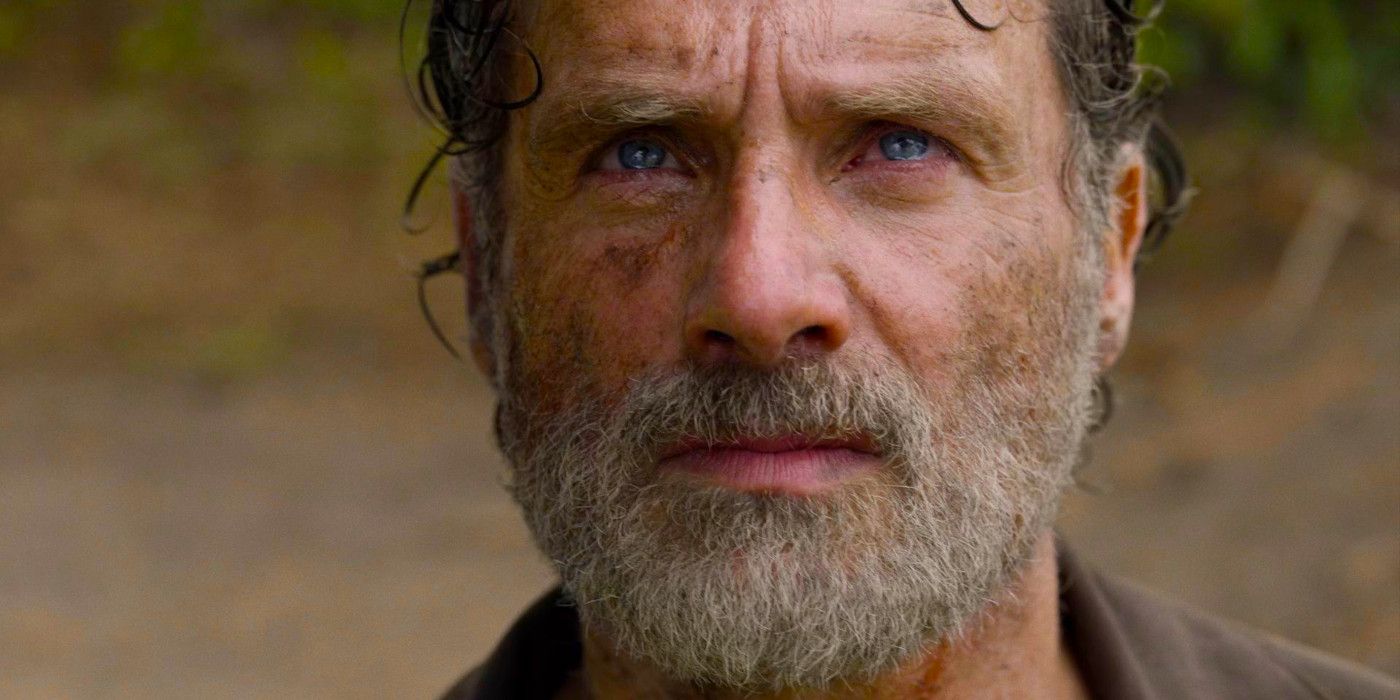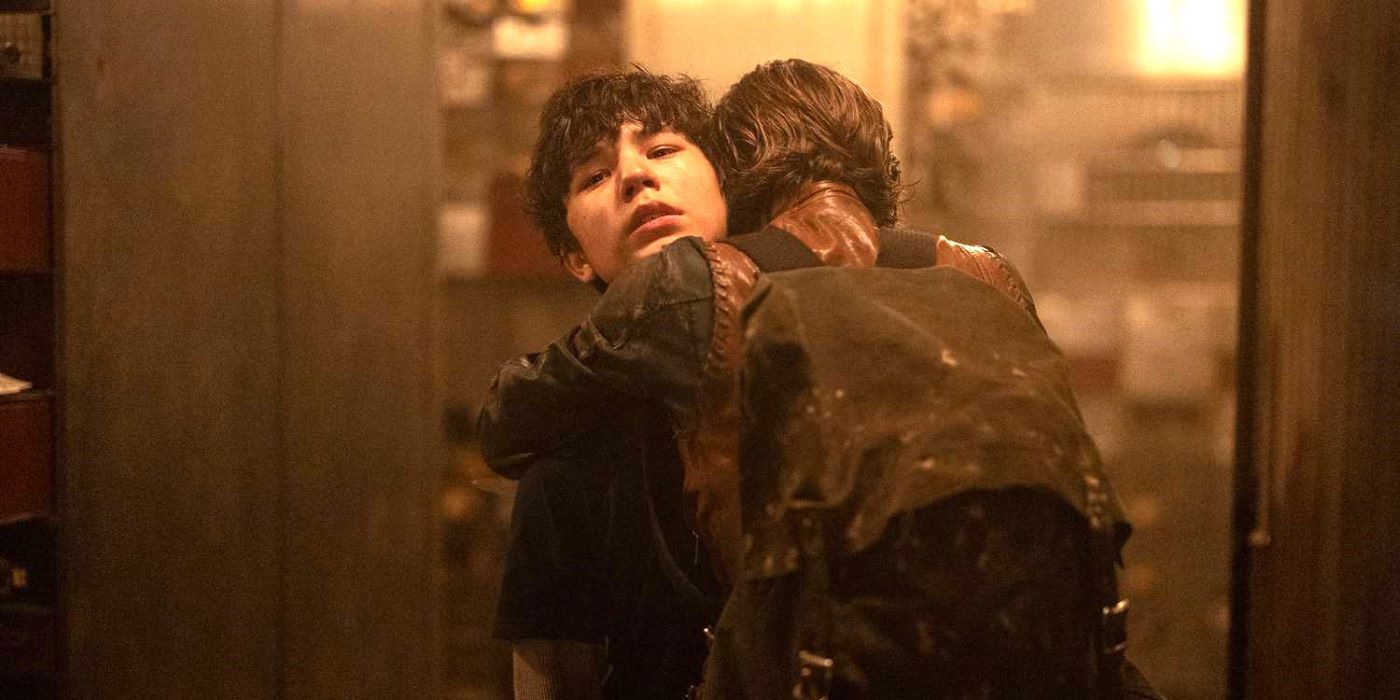The Walking Dead: Dead City season 2 has the perfect opportunity for a much-needed retcon that would iron out the biggest timeline wrinkle currently making the franchise look scruffy. If Rick Grimes grabbed a zombie, cut it open, removed its innards, spread the various guts and organs on the ground at random, then sprinkled spaghetti over the top, the resulting mess would still be easier to comprehend than The Walking Dead‘s timeline. Even before expanding into a multi-show franchise, The Walking Dead chronology became tricky thanks to actor Chandler Riggs growing up noticeably faster than Carl Grimes.
With AMC tossing no less than five canon spinoffs into the mix, The Walking Dead‘s timeline has become harder and harder to make sense of. Taking a cue from Robert Kirkman’s original comic series, The Walking Dead typically attempts to keep its calendar as vague as possible, mitigating any continuity issues. As storylines from different shows bleed into each other, however, The Walking Dead has been forced to drop that ambiguity, and the resulting sequence of events doesn’t quite line up. Rick Grimes’ return gives rise to an especially confounding inconsistency, but it’s one that Dead City season 2 can address.
Rick’s Return Created A Walking Dead Plot Hole
How Could Maggie & Negan NOT Mention Rick?





As much as The Walking Dead attempts to obscure its timeline, The Ones Who Live clearly takes place before Dead City. Based on how long Rick served the CRM, Michonne’s confirmation that RJ is eight-years-old, and The Ones Who Live‘s proximity to World Beyond, Rick and Michonne must return to Alexandria relatively soon after The Walking Dead season 11’s ending. Dead City‘s exact timeline placement may not be crystal clear, but it’s almost certainly later than The Ones Who Live. And that’s odd, because neither Maggie nor Negan ever mention Rick’s survival.
Maggie’s plan to find Negan and trade him to the Croat in exchange for Hershel’s safe return does – on paper, at least – look far riskier than simply co-leading a rescue mission with Rick Grimes.
Maggie actress Lauren Cohan has mentioned an inter-show time jump anywhere between “a few years” to “five or six years, at least” (via OUCH), which chimes with both Hershel being played by an older actor in Dead City and Negan’s reference to the Saviors existing up to “15 years” earlier. Maggie and Negan share almost the entirety of Dead City season 1 together, often discussing past events at length, but never do they mention Rick’s return from the dead or allude to his presence in Alexandria, which is a topic that would surely come up over the course of an entire season.
A bigger question arises: why didn’t Maggie enlist Rick Grimes’ help rescuing Hershel from the Croat? After years of military training with the CRM, Rick rose to the rank of sergeant major while gathering vast amounts of tactical knowledge, and by the time The Ones Who Live ends, the CRM is an ally to Alexandria. Maggie’s plan to find Negan and trade him to the Croat in exchange for Hershel’s safe return does – on paper, at least – look far riskier than simply co-leading a rescue mission with Rick Grimes and some troops.
Why Dead City Should Retcon The Walking Dead’s Timeline
The Walking Dead Has Made A Retcon Necessary

The Walking Dead: Dead City can easily rectify season 1’s Rick Grimes plot hole by having Maggie drop a reference to Andrew Lincoln’s character early in season 2. Maggie might even make some passing justification for not involving Rick in Hershel’s retrieval – maybe revealing that she would have felt too guilty asking Rick to put himself in danger for Hershel’s sake after the entire CRM ordeal.
Perhaps, for example, Maggie mentions that actually only 18 months or two years have passed since the Commonwealth became an allied community.
None of that, however, solves The Walking Dead: Dead City‘s underlying timeline problem. Season 1’s Rick Grimes plot hole was merely a symptom caused by the bigger issue of Negan and Maggie’s story taking place so far ahead of The Ones Who Live and Daryl Dixon. AMC airing three Walking Dead spinoffs simultaneously, but with one set way further into the future than the others, was always going to rub awkwardly, as any significant events from the earlier shows would need to be reflected in Dead City.
Rick’s return to Alexandria is one example of this, but with Daryl Dixon seasons 2 and 3 in development and The Ones Who Live season 2 also still possible, plot holes will continue to emerge. The only proper solution is for The Walking Dead: Dead City season 2 to slyly wind back its clock, making a reference that brings itself chronologically closer to Daryl Dixon and The Ones Who Live. Perhaps, for example, Maggie mentions that actually only 18 months or two years have passed since the Commonwealth became an allied community.
Doing so would give The Walking Dead room to pull as many massive twists in other spinoffs as it deems fit – without those twists then needing to be factored into the more future landscape of Dead City. As a consequence, The Walking Dead‘s timeline would feel a lot less like Rick Grimes’ aforementioned metaphorical guts mural, and a lot more like a cohesive story.
Why Dead City Can Get Away With Retconning The Walking Dead’s Timeline
A Special Case Demands A Special Solution

Retcons can often feel clumsy and contradictory, carving out an even bigger plot hole than was already there. Dead City season 2, however, has enough narrative wiggle-room to get away with it. When Negan commented about “15 years,” for instance, he actually said “12, 15 years” as if he hadn’t been keeping track, giving enough leeway for Dead City season 2 to reveal it actually takes place much closer to The Walking Dead‘s ending than previously thought. Maggie’s son looking older would still be somewhat jarring, but no more so than Chandler Riggs’ Carl on The Walking Dead.
If season 2 relocates The Walking Dead: Dead City to shortly after The Ones Who Live and Daryl Dixon , the franchise’s future plans would be considerably easier to map out.
Dead City has become restrictive for other The Walking Dead TV shows. Even the simple knowledge that Oceanside still exists in Dead City means no other The Walking Dead TV show can do anything to destroy the matriarchal community. Likewise, no other Walking Dead spinoff can visit New York City, or feature Negan, or do anything else that would contradict the world as seen in Dead City season 1. The benefits of removing that problem would far outweigh Hershel having a surprisingly rapid growth spurt or Negan’s poor sense of time.
As a bonus, condensing the overall Walking Dead timeline would make a crossover between shows far easier to pull off. If a reunion between The Walking Dead‘s various cast members ever occurs, Maggie and Negan will inevitably be involved. The crossover would then face the dilemma of whether to place itself pre-Dead City and sacrifice some jeopardy because viewers already know Maggie and Negan survive, or jump beyond Dead City and potentially need to recast the likes of Judith Grimes. If season 2 relocates The Walking Dead: Dead City to shortly after The Ones Who Live and Daryl Dixon, the franchise’s future plans would be considerably easier to map out.





